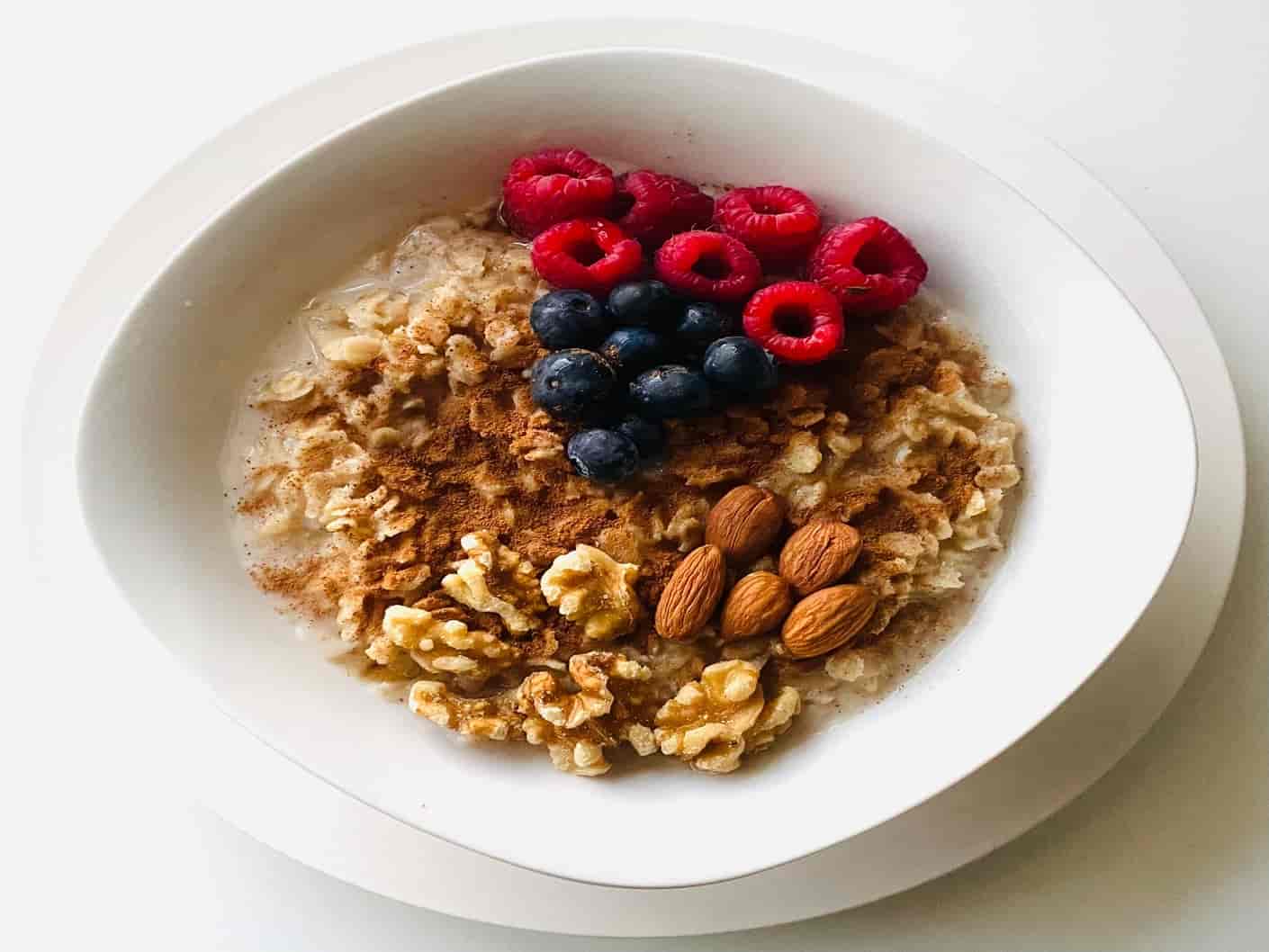For people with high blood pressure, eating a healthy breakfast is important. But is oatmeal good for high blood pressure? The answer may surprise you! Read on to learn more about how oatmeal can help control blood pressure and keep your heart healthy.
Is Oatmeal Good For High Blood Pressure?
Diet plays an important role in lowering blood pressure.
You know you need to eat less salt and more fruits and vegetables. Keeping your weight in check is also important to you.
But there’s something else you should consider: how much fiber you’re getting in your daily diet. Adding more can help lower your blood pressure significantly, according to research published in the journal Hypertension.
People who ate 30 grams of fiber a day (about two apples and one cup of beans) had a 22% drop in risk for developing high blood pressure compared with people who consumed the least amount of fiber (less than 8 grams a day). That’s almost as strong as the effect of cutting salt intake, which can reduce your risk by 25%.
Fiber is found in foods derived from plants, including beans, peas, nuts, seeds, whole grains (including oatmeal), fruits, and vegetables.
The question is, what is a good breakfast for high blood pressure? Oatmeal is one of the healthiest breakfast choices you can make. If you have high blood pressure or hypertension, it’s a good idea to start your day with a bowl of oatmeal because it is low in sodium and contains all sorts of good things like potassium, calcium, and magnesium. Not only does oatmeal help lower blood pressure, but it also helps lower cholesterol, which may just improve your overall health.
So if you’re looking for a new way to start your day, go for the oatmeal. You’ll be surprised how much better you feel once you start eating this superfood at breakfast every day!
What Are The Benefits Of Oatmeal?
Oatmeal is a very popular breakfast food, but it’s also one of the most nutritious foods on the planet. It’s packed with fiber, minerals, and antioxidants, and it can help you lose weight and lower your cholesterol.
Check out these five benefits of eating oatmeal for breakfast:
- Oatmeal is high in fiber, which will keep you full longer after eating. Oatmeal is made up of soluble and insoluble fiber, which means it’s good for your digestive system.
- Oatmeal also contains high levels of thiamin, magnesium, phosphorous, zinc, manganese, selenium, and iron.
- It contains important antioxidants that help protect your body from aging and disease.
- Eating oatmeal can help lower your cholesterol levels and reduce the risk of heart disease because it contains beta-glucans (a type of soluble fiber).
- Oatmeal can be used as an exfoliant to cleanse and moisturize your skin.
What Are The Potential Side Effects Of Oatmeal?
The oatmeal is the seed of the oat, which is a grain. It is considered a cereal grain and was one of the first grains to be cultivated. Oats are a rich source of protein, fiber, vitamins, and minerals.
Oatmeal is popular in cereals and bread. In addition, oatmeal can be used to make beer and vodka.
There are many potential side effects of oatmeal. Some side effects include:
- Allergic reactions
- Digestive problems
- Interfere with the absorption of nutrients
- Interact with certain medications
Is Oatmeal Good For Diabetics?
Oatmeal is a great choice for people with diabetes. The soluble fiber in oatmeal helps slow the absorption of sugar into the bloodstream, which helps keep blood sugar levels stable. How you prepare your oatmeal, however, could make it less healthy than you might think.
It’s best to avoid the instant oatmeal that comes in packets because it has added sugar and salt. Instead, pick up old-fashioned or steel-cut oats and add your own toppings — fresh fruit, cinnamon, or nuts — to sweeten them.
How Can I Add More Oats to My Diet?
Oats are a great addition to your diet. But because oats can be high in calories, it’s important not to go overboard with them. A half-cup serving of dry oats contains 150 calories and 3 grams of fiber. You should be able to find room in your day for this amount, especially if you’re trying to cut back on higher-calorie, less nutritious foods.
You can boost the nutrition of any meal by adding oats. Here are some ideas:
- Add a half-cup of raw oats to your smoothie recipe (along with more liquid to compensate for the extra bulk).
- Use whole wheat flour when making bread and other baked goods, replacing up to a one-quarter cup of it with uncooked oats.
- Mix equal parts of cooked oatmeal and cottage cheese for high-protein breakfast or snack.
- Top yogurt with oat granola.
- Add oat bran to a favorite muffin recipe or pancake mix.
- Make an instant soup with old-fashioned rolled oats instead of noodles.
- Add cooked oatmeal to meatloaf or burgers.
- Mix crushed oats into your favorite cookie recipe or sprinkle on top before baking.
Summary: Is Oatmeal Good For High Blood Pressure
According to the latest research, it seems that you can confidently make oatmeal a part of your diet if your blood pressure is high. The more whole grains in general you include, the better—so by all means, have oatmeal for breakfast, but be sure to have some whole wheat bread or a salad with whole-grain rice as well. Consider adding some spices to give oatmeal some extra health benefits that can help lower blood pressure.
